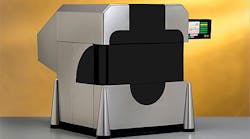Parker Hannifin is partnering with +Mfg to build a new 3-D printing platform large enough and stable enough to print an engine block.
"Parker was our first choice for the motion control because we knew its reputation in this field," says Paul Saleba, a +Mfg associate.
"When we first started doing some of the prototypes just to prove the technology would work, our engineers went to the Parker headquarters and talked to them, and described what we were trying to achieve," he said. "Parker was very helpful and very excited because they saw the potential of this technology transforming parts production for many industries."
At the time, Parker offered motion controllers for numerical path planning, but they were in beta testing with the Parker Automation Controller (PAC), which is far better suited for 3-D numerical control and includes all the features they needed, like pre-processed path planning, path smoothing, tool correction, among others.
The question then became, would +Mfg be willing to apply a nascent controller to its nascent 3-D machine?
The company agreed to collaborate with Parker on co-developing their respective products.
"By doing this it gave us the opportunity to put the PAC through its paces on a real life machine and find any bugs," says Aaron Turano, Electromechanical Territory Manager for Parker Hannifin's Automation Group / Electromechanical Division.
"The testing this division had done with numerical control (CNC G-code) capabilities allowed us to build our knowledge base in a live application," he says. "It involved selecting the right actuators to manipulate the torch and lay down the medium. We had to provide a stiff machine that didn't wiggle around when it was in motion and was fully supported. The selection of the actuators, the motors, and drives was pretty straightforward. One of the key values Parker added was the ability to engineer the complete motion solution from the mechanics to the controls."
More on building a bigger and better 3-D printer on New Equipment Digest.
New Equipment Digest is an IndustryWeek companion site with Penton’s Manufacturing and Supply Chain Group.



